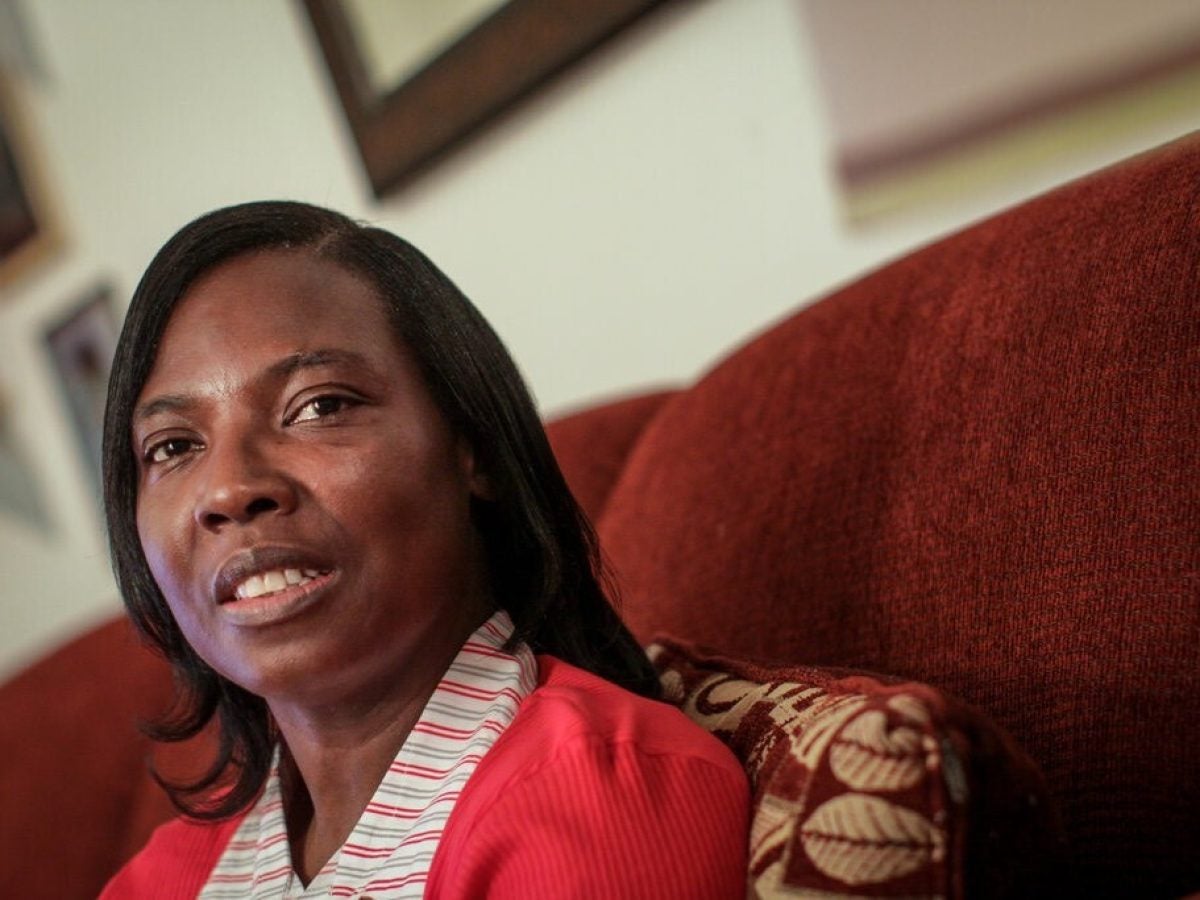
SPONSORED BY JOHNSON & JOHNSON
Diane Talbert, now 60, still carries her first memory of feeling different than the other kids. It was her first day of school, and she was just six years old at the time. Her skin, which had been getting progressively worse for months, was now mostly covered in itchy, gray, flaky plaques – a condition she now knows is psoriasis. Out of unfounded fears that the condition was contagious, she recalls how the school administrators wouldn’t let her through the front door of the building.
If this reaction wasn’t stigmatizing enough, Diane also had to deal with her classmates teasing her for having “alligator skin.” Self-conscious and confused, Talbert spent countless hours in the local library combing through medical books in search of a single image of someone else who looked like her. She found none.
Talbert grew up in the 1960s, when U.S. medical schools taught future doctors that psoriasis was characterized by reddish patches covered with a silvery white buildup of plaque. Case studies in medical textbooks offered precious few examples of how psoriasis plaques can look on darker skin – more of a purple, gray, or dark-brown hue. Still today, only 18% of images in dermatology textbooks show how conditions like psoriasis look on skin of color.
“I was told for 25 years that my pain was not real,” Talbert says. “Doctors never saw me, only my black skin. This caused me to mistrust doctors for a long time. I have had six biopsies to prove that I have psoriasis, but despite this, I was once told by a medical professional, ‘Black people don’t get psoriasis.’”
20 YEARS UNDIAGNOSED
One in every three people with psoriasis goes on to develop psoriatic arthritis, an autoimmune disease triggered when the body’s immune system mistakenly attacks healthy joints and skin, causing inflammation, stiffness, swelling and acute pain that can be debilitating. Psoriatic arthritis and plaque psoriasis are known collectively as psoriatic disease.
Talbert’s pain levels and swelling intensified in her mid-20s. Her body began overproducing skin cells that caused her nails to pit – a condition that occurs when the surrounding skin thickens and lifts fingernails and toenails out of the nail beds. Physician after physician ignored these new symptoms, attributing them to her underlying psoriasis.
Talbert continued to seek out answers and treatment options, visiting multiple general practitioners and specialists. One doctor told Talbert that she was too young to have arthritis. Using different language, they all reached the same conclusion and dismissed her complaints about debilitating pain. She was told to find treatment options that were over the counter.
Talbert remained undiagnosed for 20 years. Research has shown that delays in treating psoriatic arthritis can cause devastating long-term health impacts, including permanent joint damage and long-term disability. It was only when Talbert found a dermatologist who initiated a complete examination – asking questions about past illnesses and stressors, taking a full family medical history, evaluating her medications, and listening intently to her answers – that she was finally diagnosed with psoriatic arthritis at the age of 45.
Talbert’s experience exemplifies some of the barriers facing people of color across the country that have directly contributed to widening health inequities in psoriatic disease. In fact, use of breakthrough biologic medicines to treat psoriatic arthritis is 69% lower among people of color compared to white patients, and minority populations with psoriatic disease report lower quality of life and higher levels of psychological impact.
“I had an illness that no one understood, and doctors told me it was all in my head,” Talbert reflects. “Somebody recently asked me, ‘Do you think it was because you’re a Black woman? At first, I said I don’t think that had anything to do with it. I grew up in an era where we didn’t think like we think now. But now that I actually think about it? Yes, I do!’”
AN ADVOCATE IS BORN
Since being accurately diagnosed with psoriatic disease, Talbert has gained access to new treatment options. She has tried eight different biologic medicines to regulate her symptoms and improve her quality of life.
She has also become a passionate and vocal advocate for health equity and culturally competent care, so other people of color like her don’t have to suffer and feel alone for years before their voices are heard in the health system. She still wrestles with pain and fatigue but tries to not let it get in her way. She has partnered with organizations like the National Psoriasis Foundation to share her story and is working with Johnson & Johnson on a project called Determi-Nation to close health equity gaps in the treatment of psoriatic disease.
Talbert recently offered these tips for other Black women who have psoriatic disease or think they might but have yet to be diagnosed:
- Your pain is real. Don’t let anyone tell you otherwise.
- Push for a biopsy if you believe you have plaque psoriasis but haven’t been able to secure a diagnosis.
- Take care of your mental health. Being a woman of color navigating the healthcare system can be difficult, so make sure you’re taking care of yourself.
- As long as it takes, keep looking until you find a dermatologist who listens to your concerns and offers solutions to address them.
- Advocate for the treatment you deserve. Ask about all the different treatment options, such as biologics, to learn more about your options.
- Consider showing your doctor Beyond the Textbook, an educational resource for physicians that shows psoriatic disease presentation on people of color – including images on different skin tones, along with real patient and expert perspectives – and provides actionable insights for inclusive communication to improve patient-provider trust.